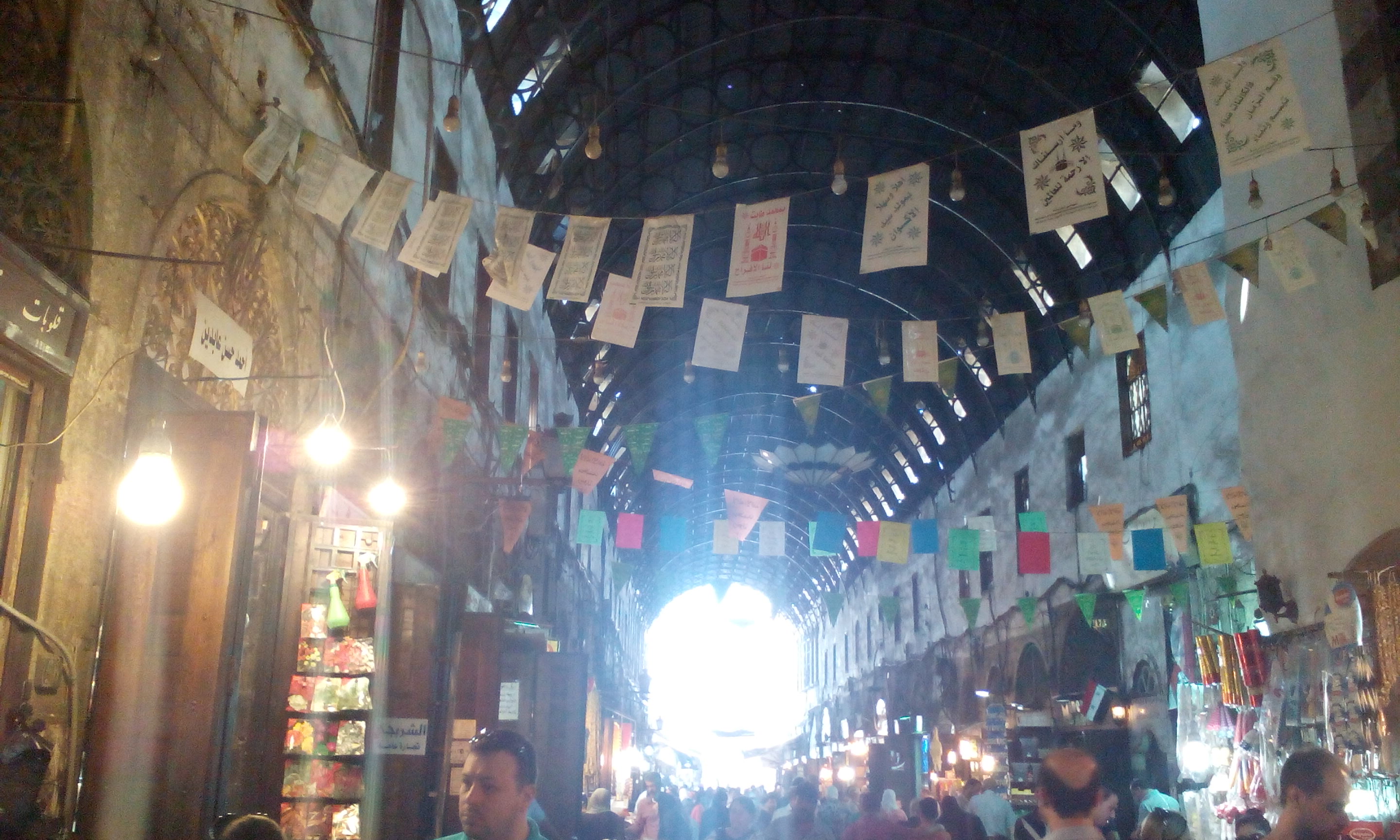Damascus, Divided by War

Four years have passed since the beginning of the Syrian revolution, and Damascus and its environs remain divided.

Neither government nor opposition has achieved victory, and each holds down certain areas. In government-held areas, people enjoy relative stability, and to a certain extent life can be considered normal. In opposition held areas, death is a daily occurrence, with mass killings carried out by government forces as punishment for the uprising.
On both sides there are hundreds of stories waiting to be told.
JULY 2011: FIRST VISIT TO DOUMA
Douma is the “capital” of the Damascene countryside, lying on the eastern flank of Damascus itself. It was the scene of some of the first anti-government protests, and many of its children have been martyred, injured or arrested.
The first time I visited Douma, it was to take part in a demonstration. It was a surreal experience – the crowd was so vast that one could easily get lost within it. People held torches, candles, and banners and chanted slogans. No one bothered to ask the person next to them who they were or where they came from. There was a magical atmosphere.
Four years on, and government propaganda has succeeded in portraying Douma as the “capital of pure evil”. It claims that mortars and rockets are launched at Damascus from Douma, and that terrorists are using it as a base from which they plan to invade the capital.
Many Damascenes call for Douma and its residents to be annihilated, but I have friends there. One is a photographer, another a journalist, and the third a teacher.
My friends do not wish to kill me, and I do not wish to kill them. The one thing we all wish for is a normal life where death isn’t a daily occurrence.
NOVEMBER 2011: MY FRIEND THE SALAFIST
Madaya is a town in the western part of the Damascus countryside, close to the Lebanese border. Its Sunni residents have a reputation for extremist views, so I found it a little odd when I was invited to attend a demonstration there. I wondered whether it would be possible for me to sit at a table with local people and discuss the revolution and the peaceful protests.
On arriving in Madaya, I was welcomed by a friendly Salafist. He invited me into his home where I met a group of young men and women who were discussing what slogans they would write on the banners they were making. A young man sat in a corner playing the guitar and singing.
We spent an hour chatting, and then we headed out to join the demonstration. It felt like we’d known each other for years.
This demonstration was similar to others I’d attended in Damascus and the surrounding countryside. Everyone chanted in unison. The men insisted that the women walked at the back of the crowd, but my friends and I sneaked up to the front, and the young men made room for us, welcoming us amongst them.
That was my only visit to Madaya, and through it I gained the friendship of that bearded man who welcomed me into his home.
I kept in touch with him, calling him from time to time to make sure he and his three children were safe. We lost contact when the government began to drop barrel bombs on Madaya. I can only hope that he and his family are okay.
NEW YEAR’S EVE 2011
My friends told me a demonstration was being held in Barzeh in eastern Damascus. What better way to see out the year?
We didn’t hesitate, but set out for Barzeh’s Freedom Square, which we found decorated with banners and revolutionary flags. We joined the demonstrators for an hour or so, dreaming of a new year that would bring us victory and salvation.
Today, Freedom Square lies in ruin. Residents have secured a truce with the government but most of them are afraid to leave the area and remain confined within Barzeh.
Over the last four years, I have experienced or heard many stories of the Syrian revolution.
A friend of mine lost her house – government forces razed it to the ground, claiming it was harbouring terrorists. She has moved to another small house and is now expecting her first child. She had been putting off having children until the war was over, but the end doesn’t seem in sight.
Many of my friends live in unsafe opposition-held areas. I myself live in a secure, government-controlled neighbourhood. None of us wish to kill those living on the other side; none of us would rejoice if we heard that those on the other side had been torn to pieces.
The only thing we all wish for is a secure life like the one we used to have, when all of us merely lived on the margins of life.
Rima Ayoubi is the pseudonym of a Damascus Bureau contributor living in Damascus.
